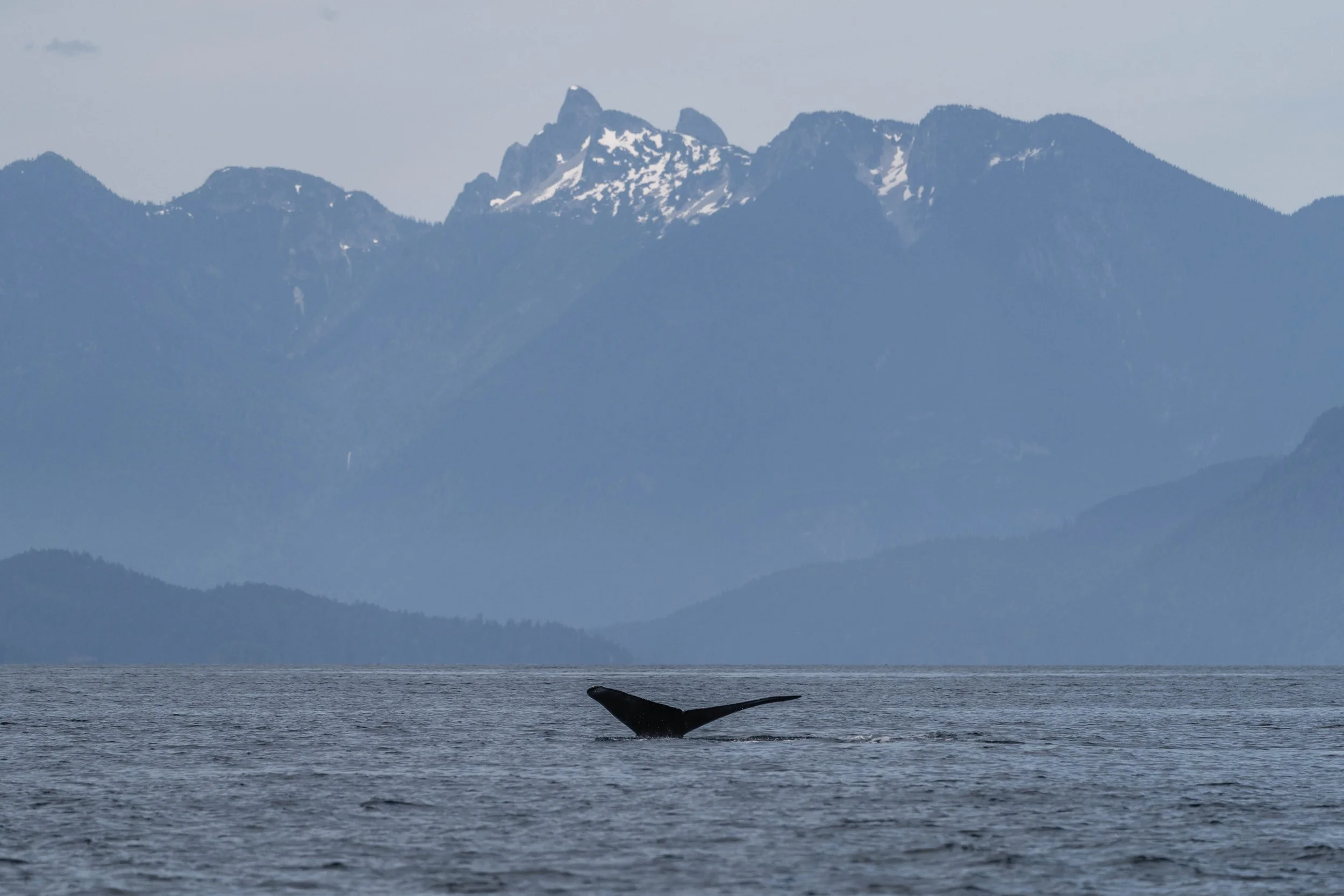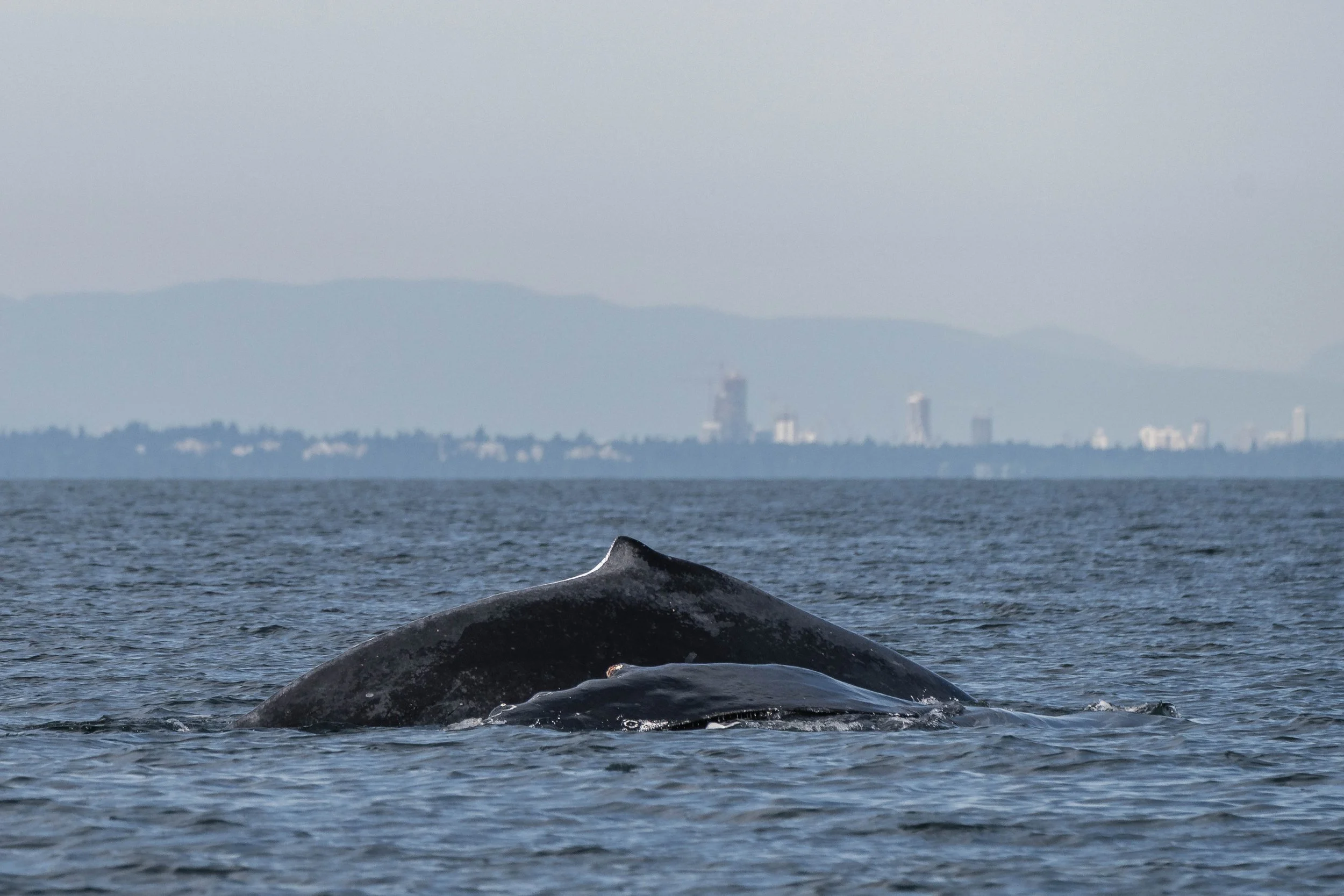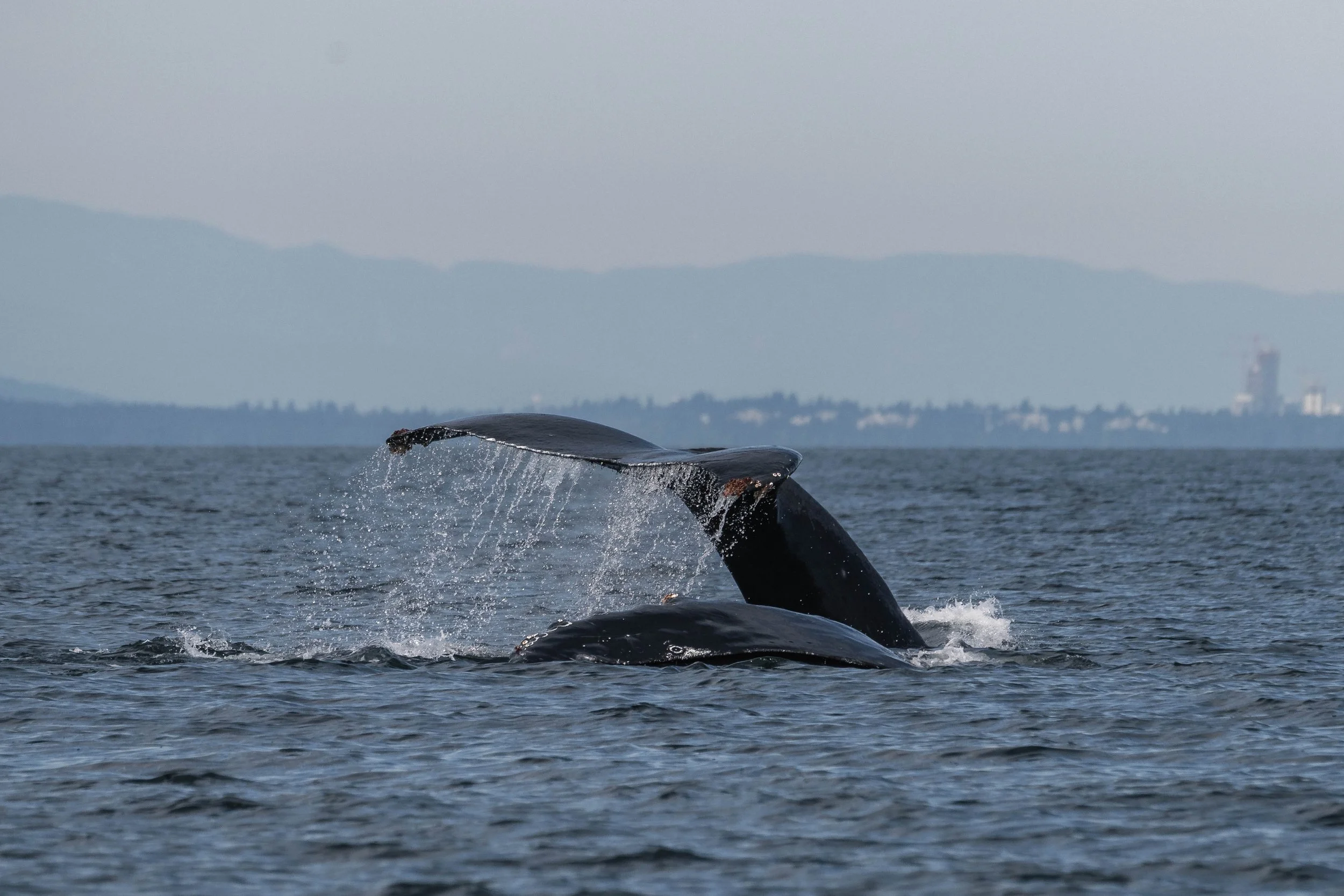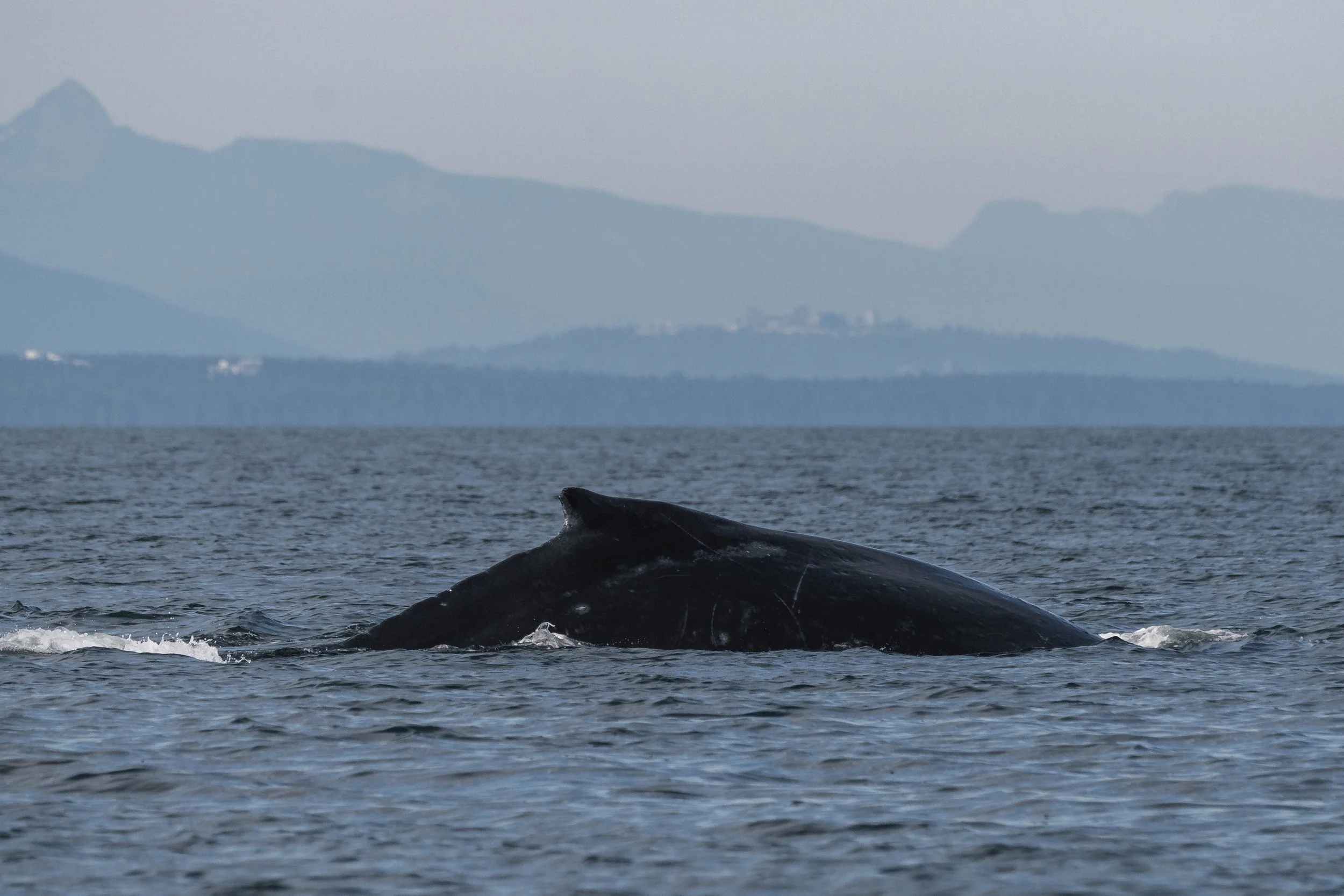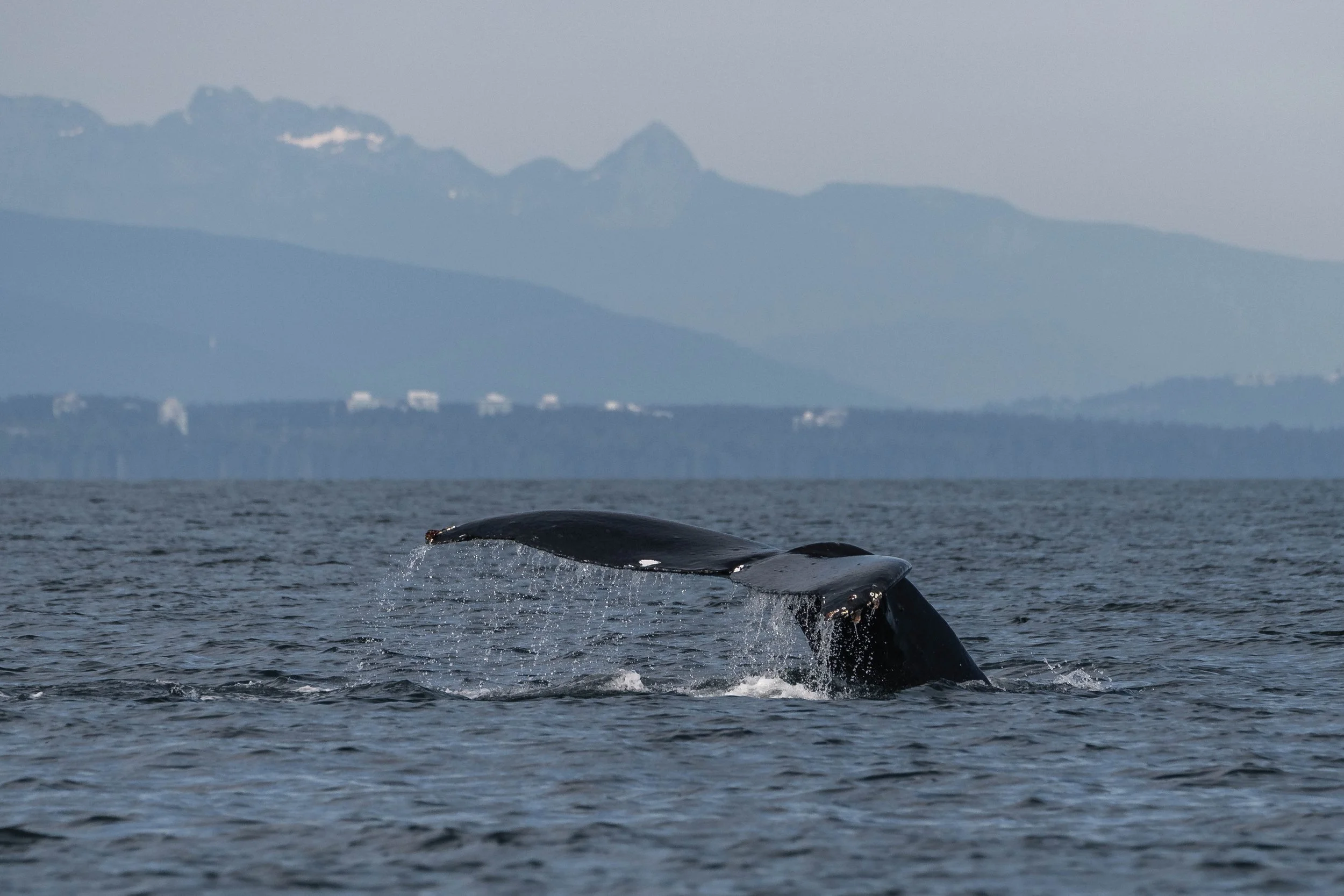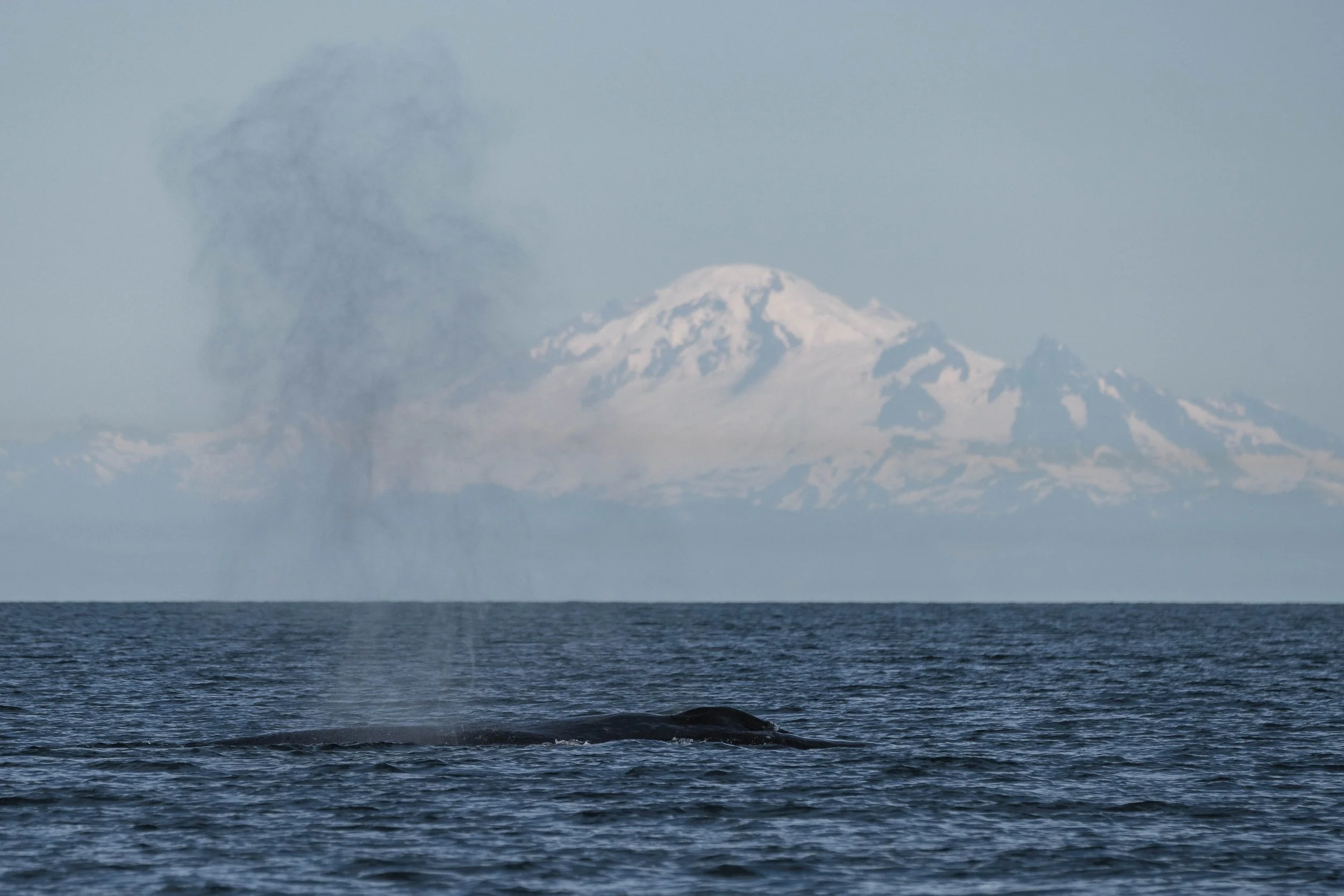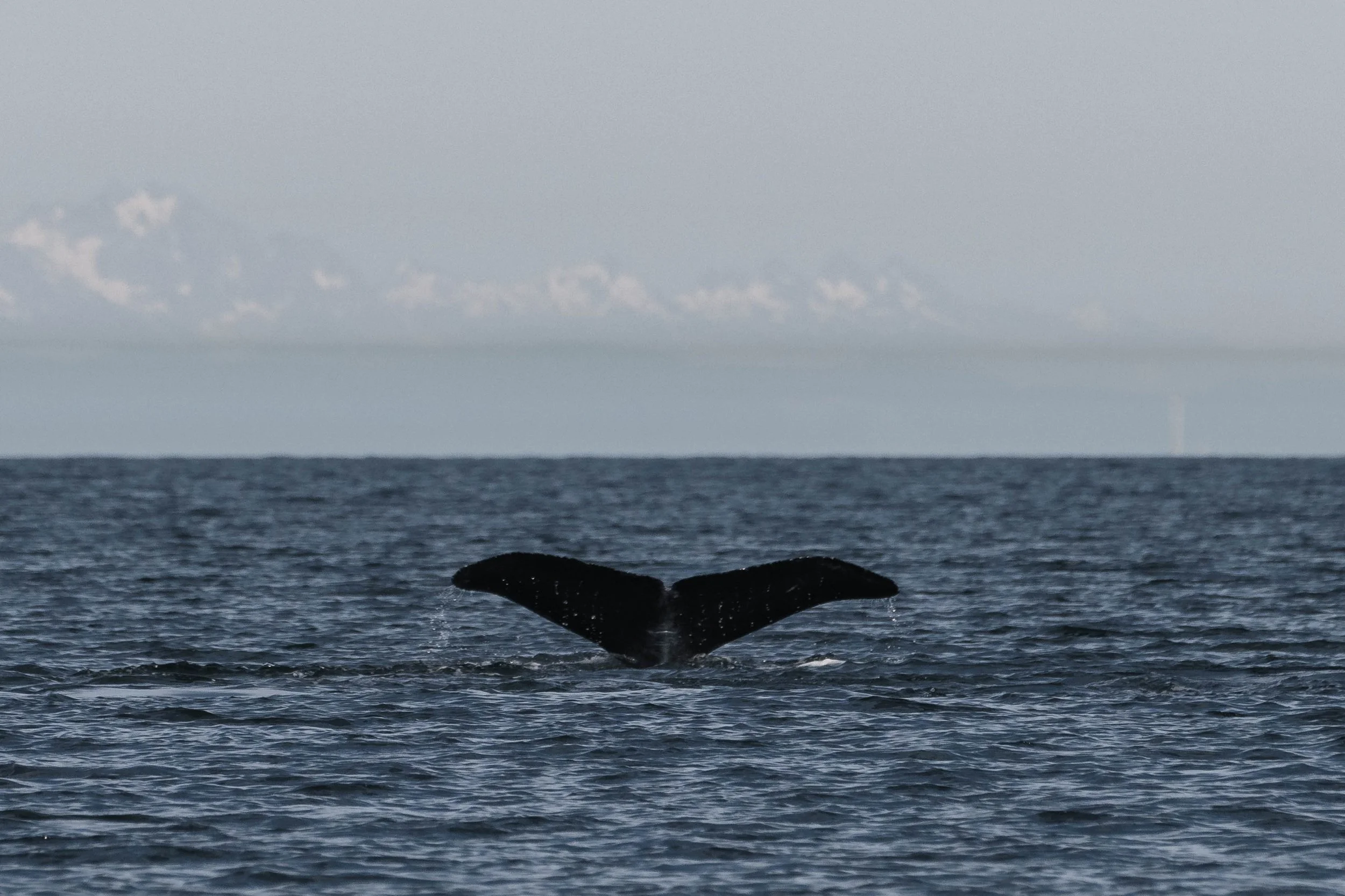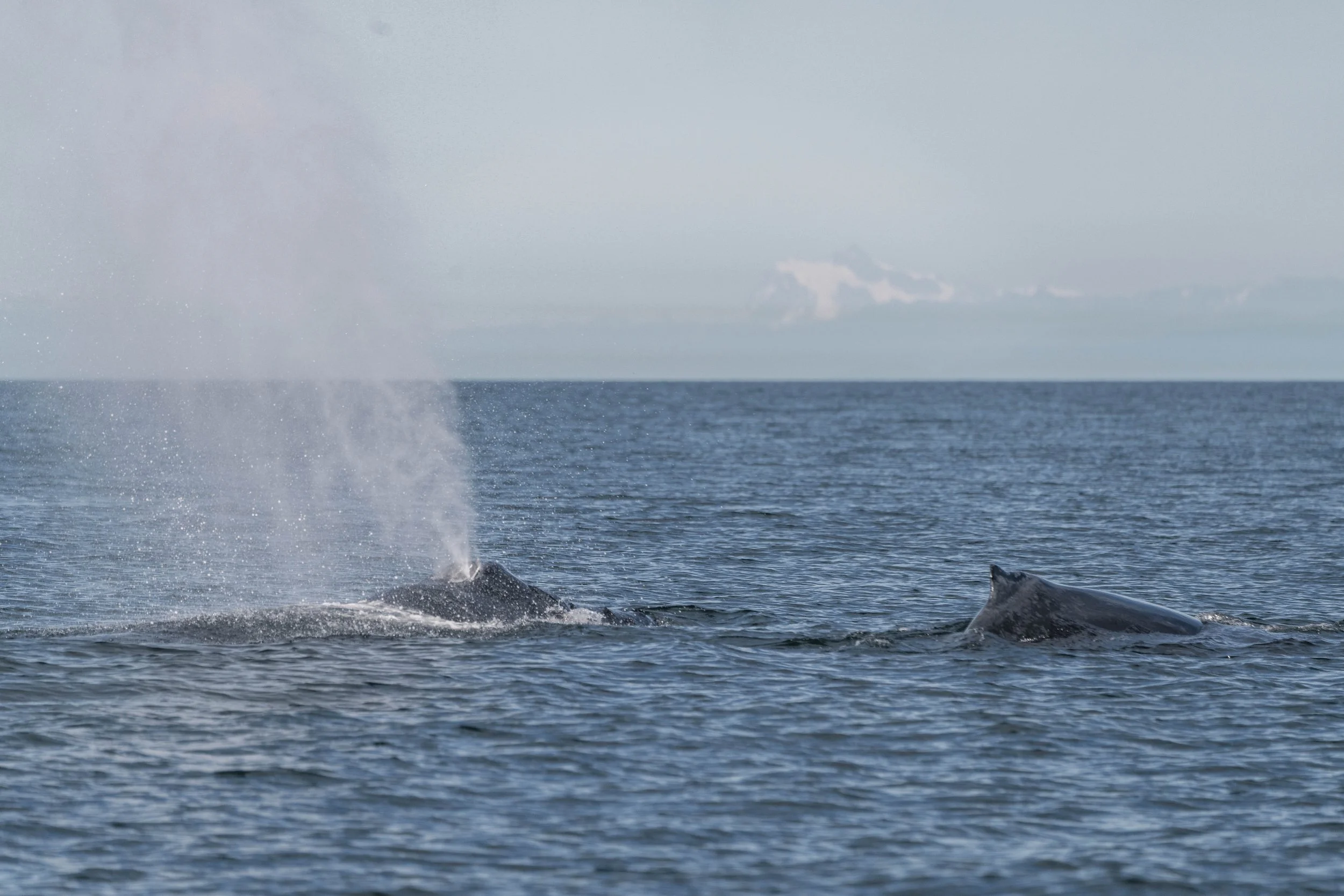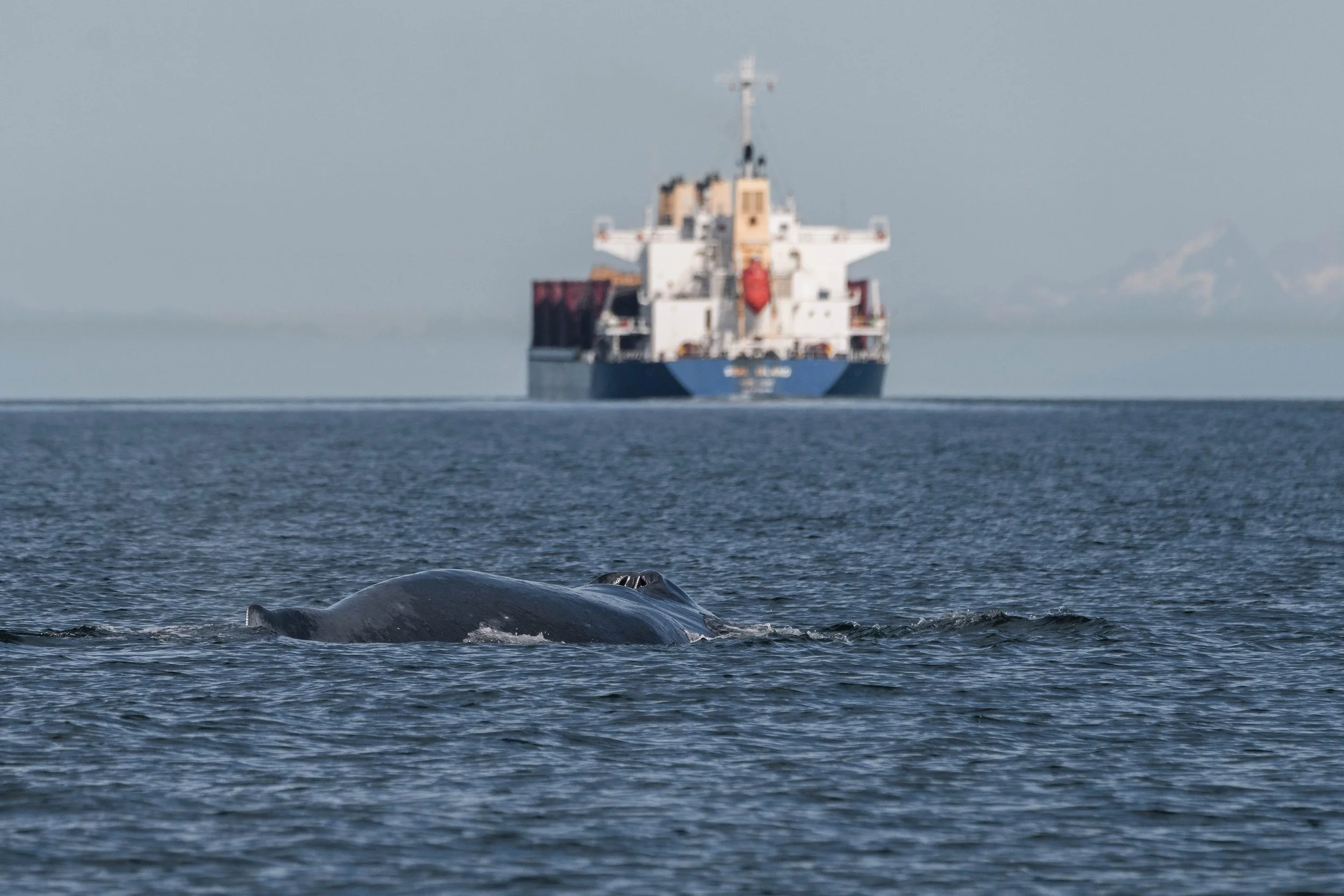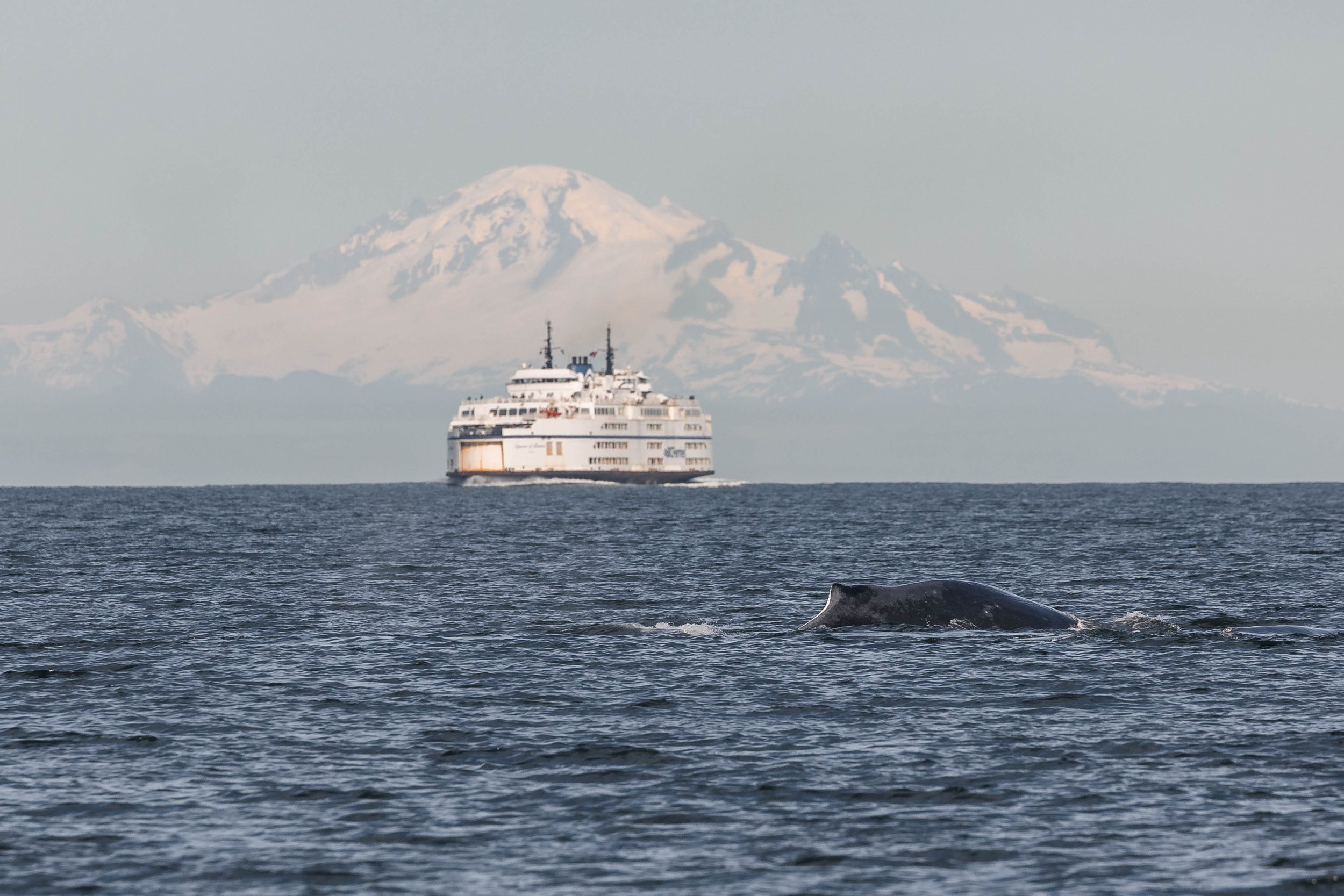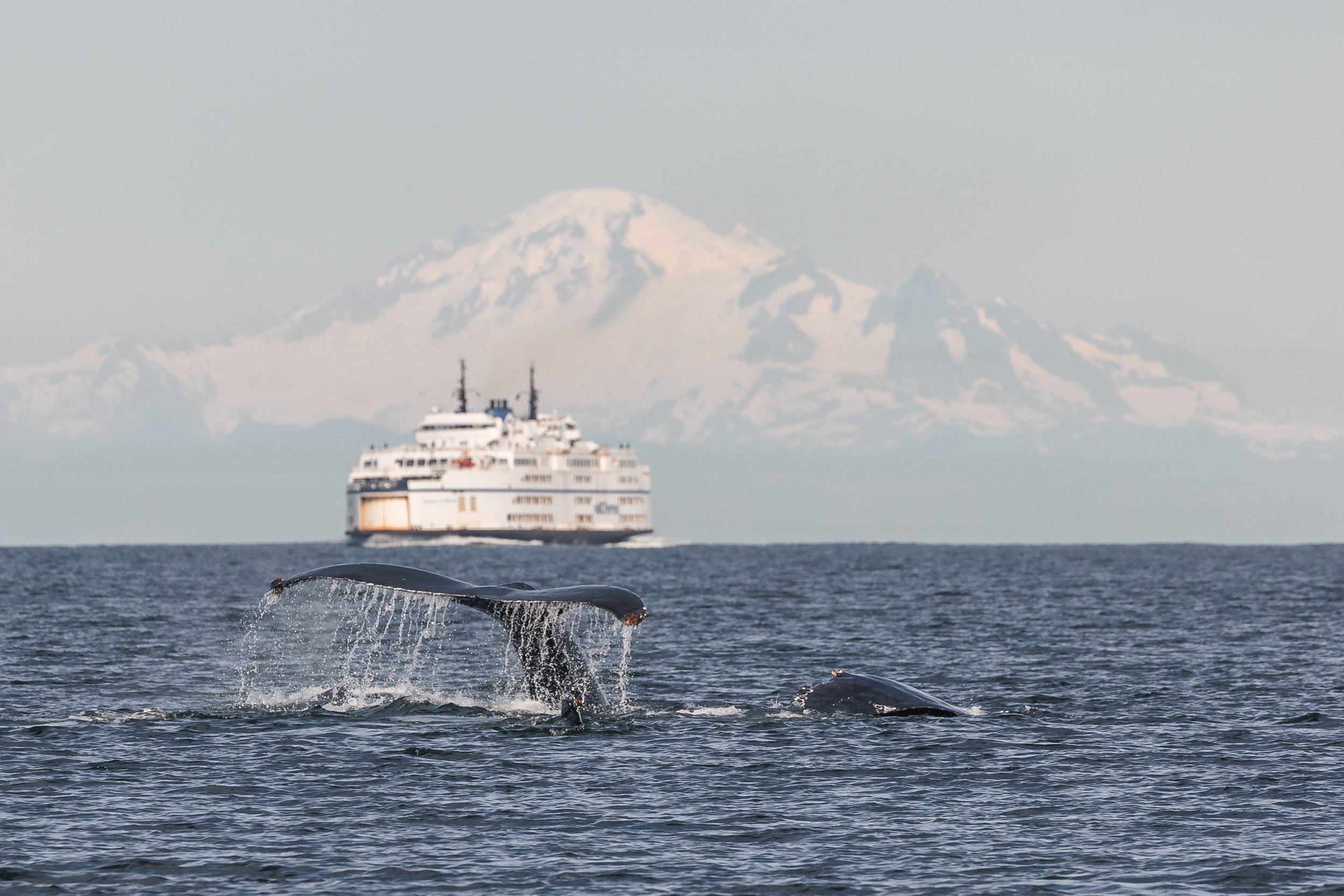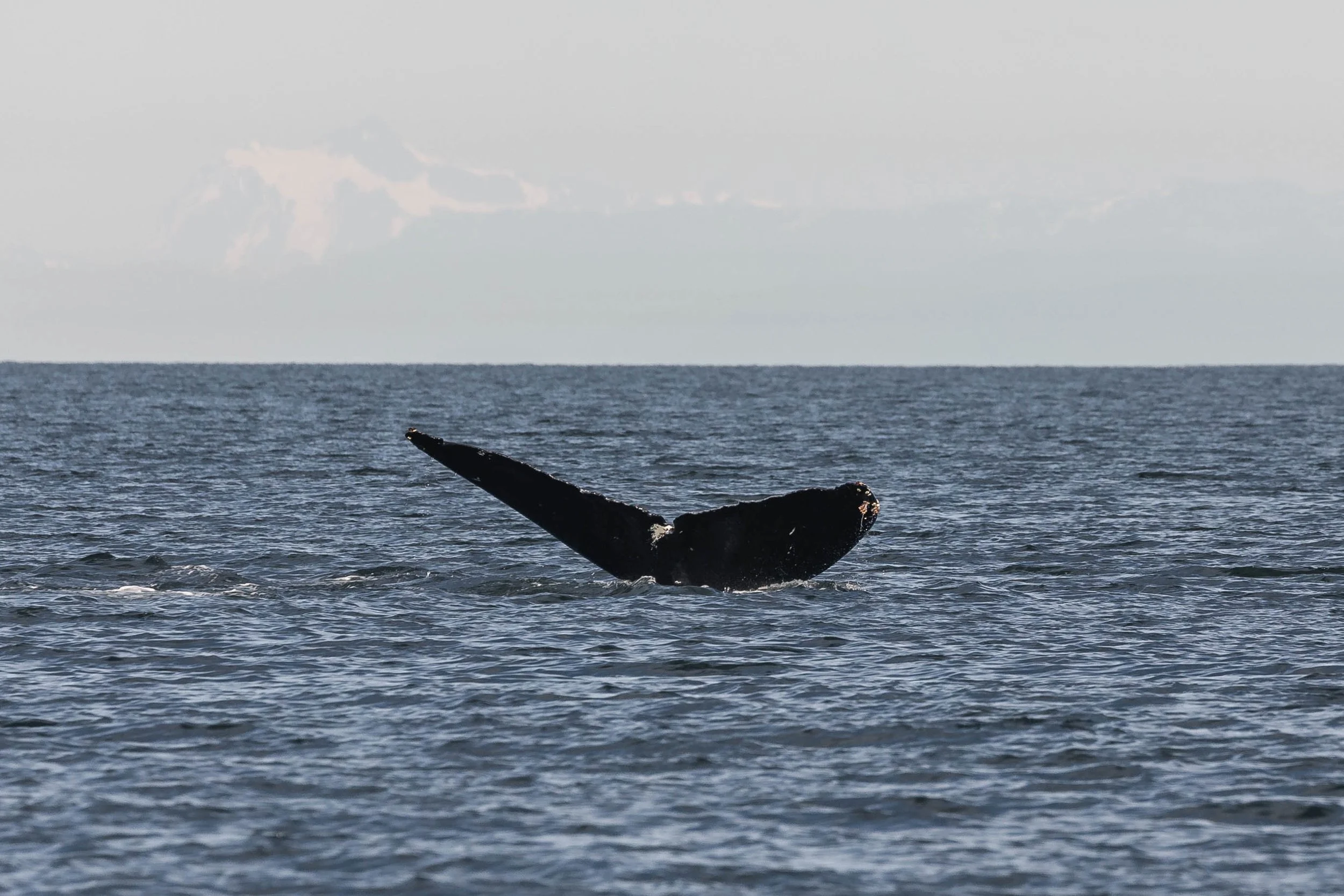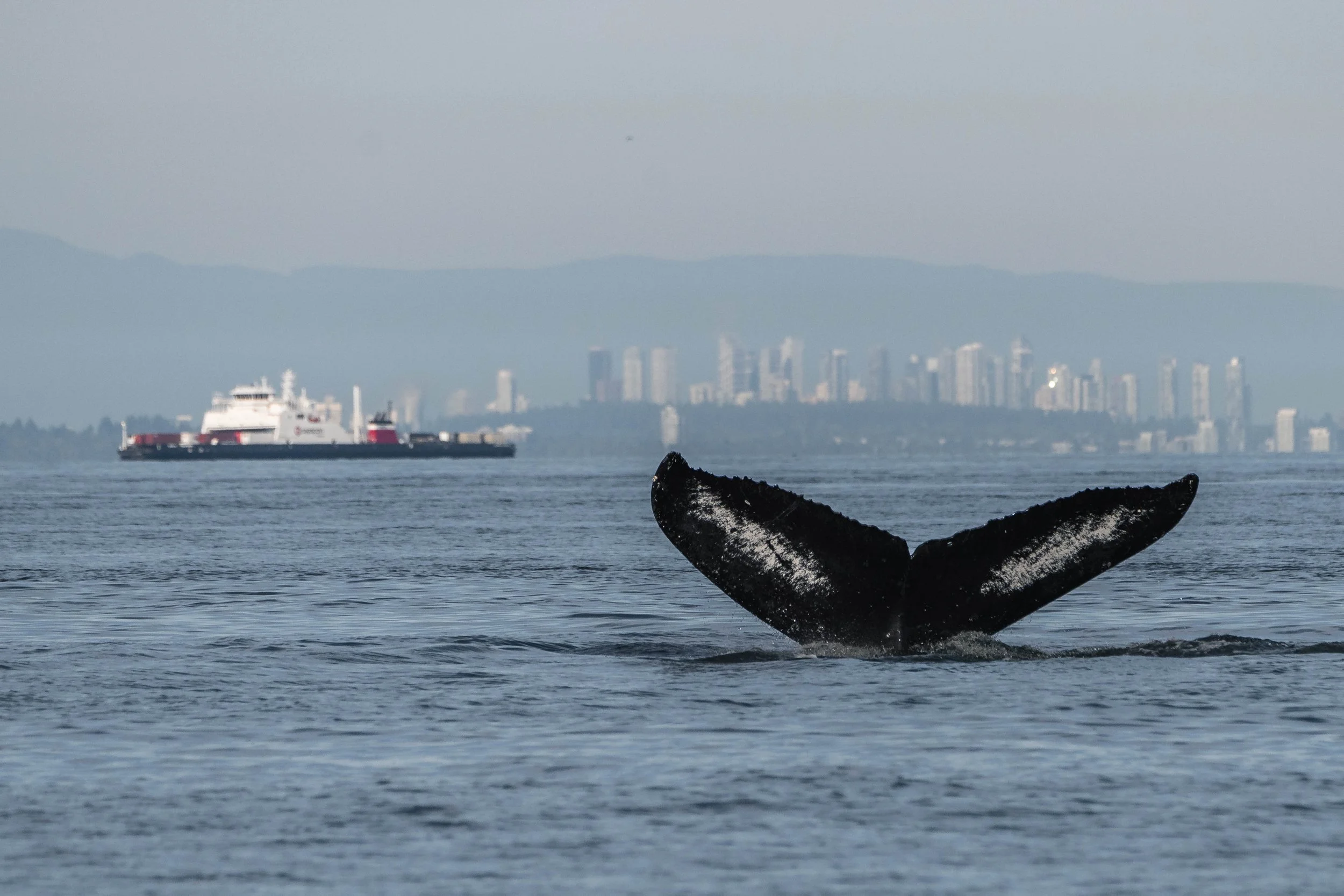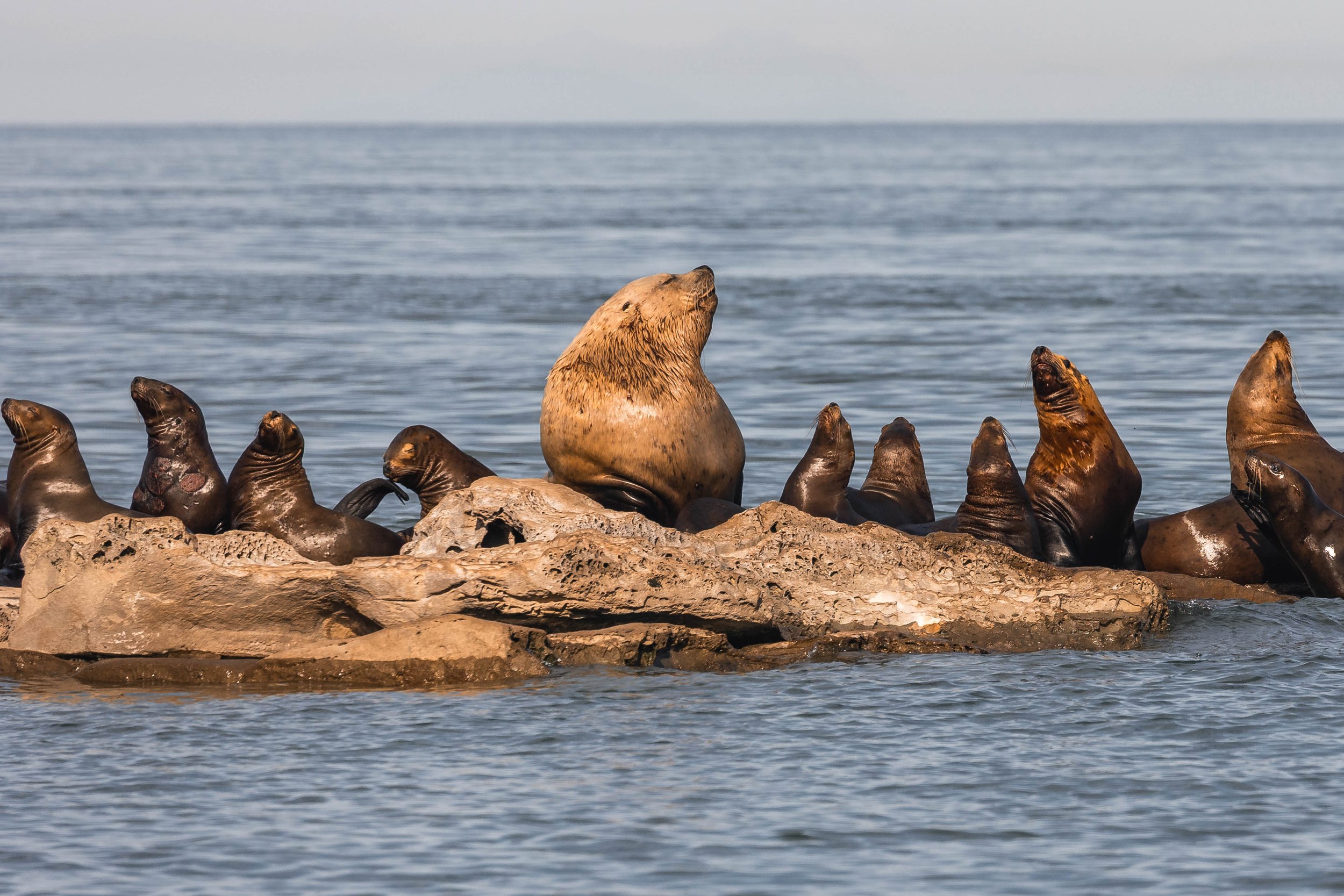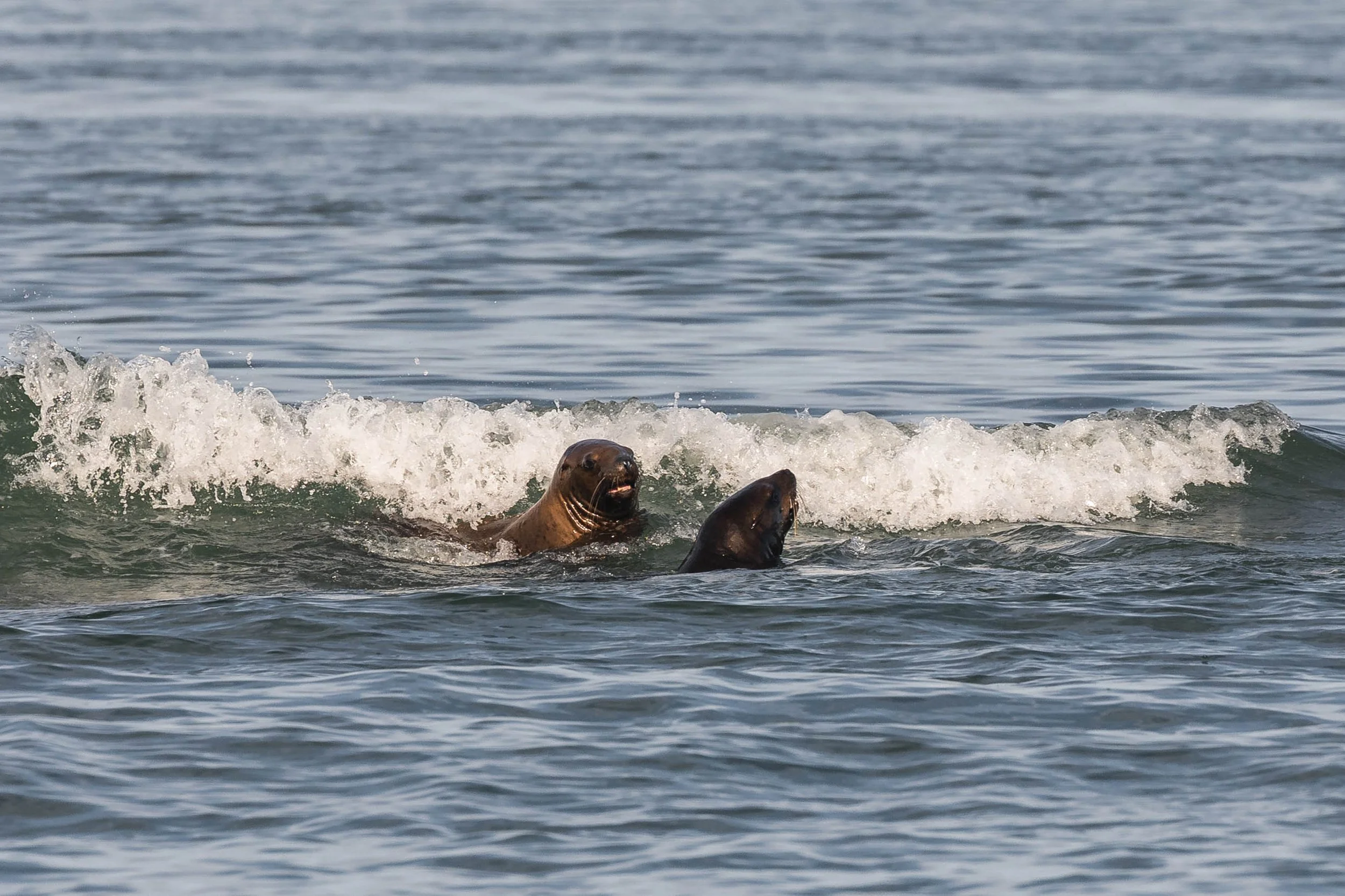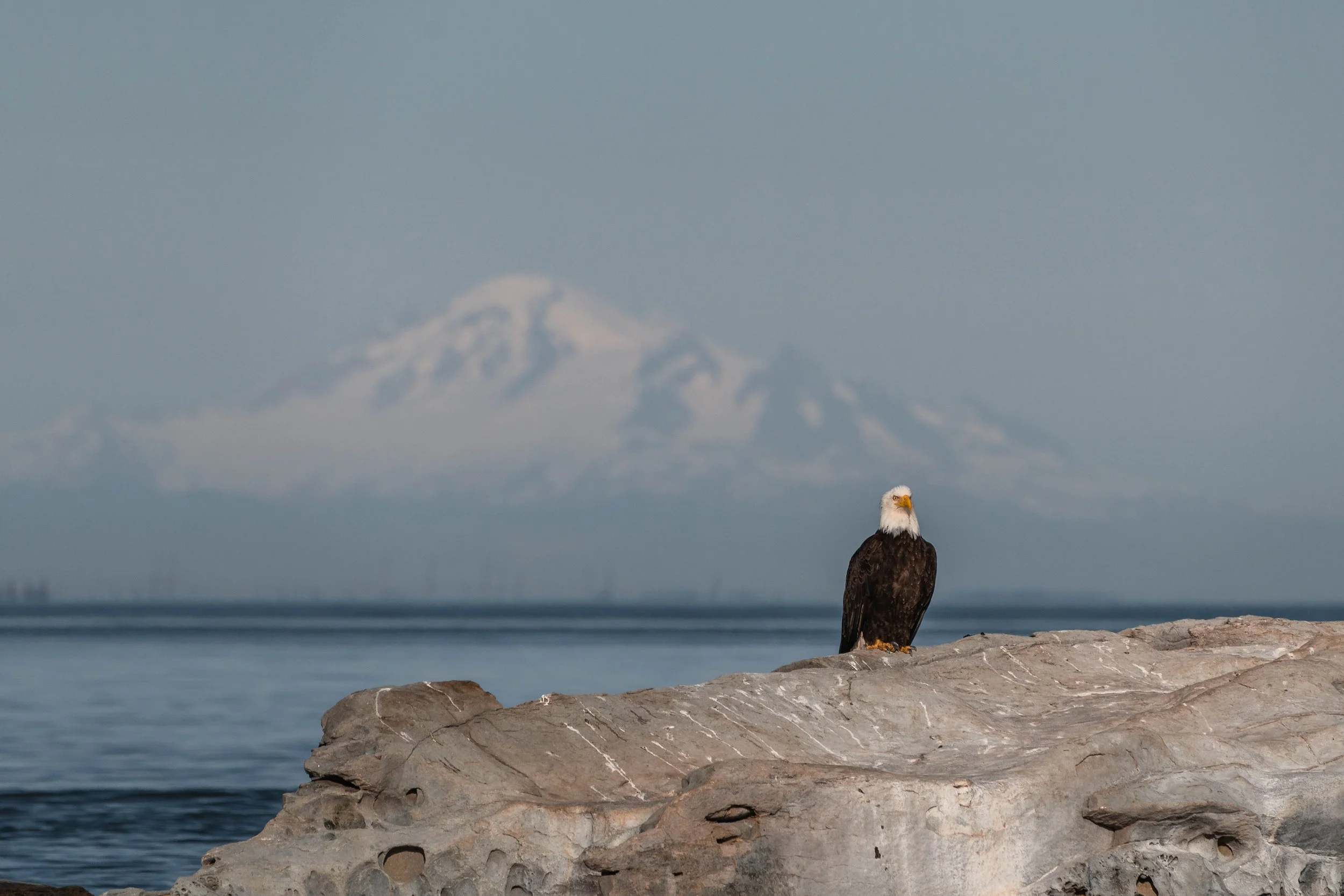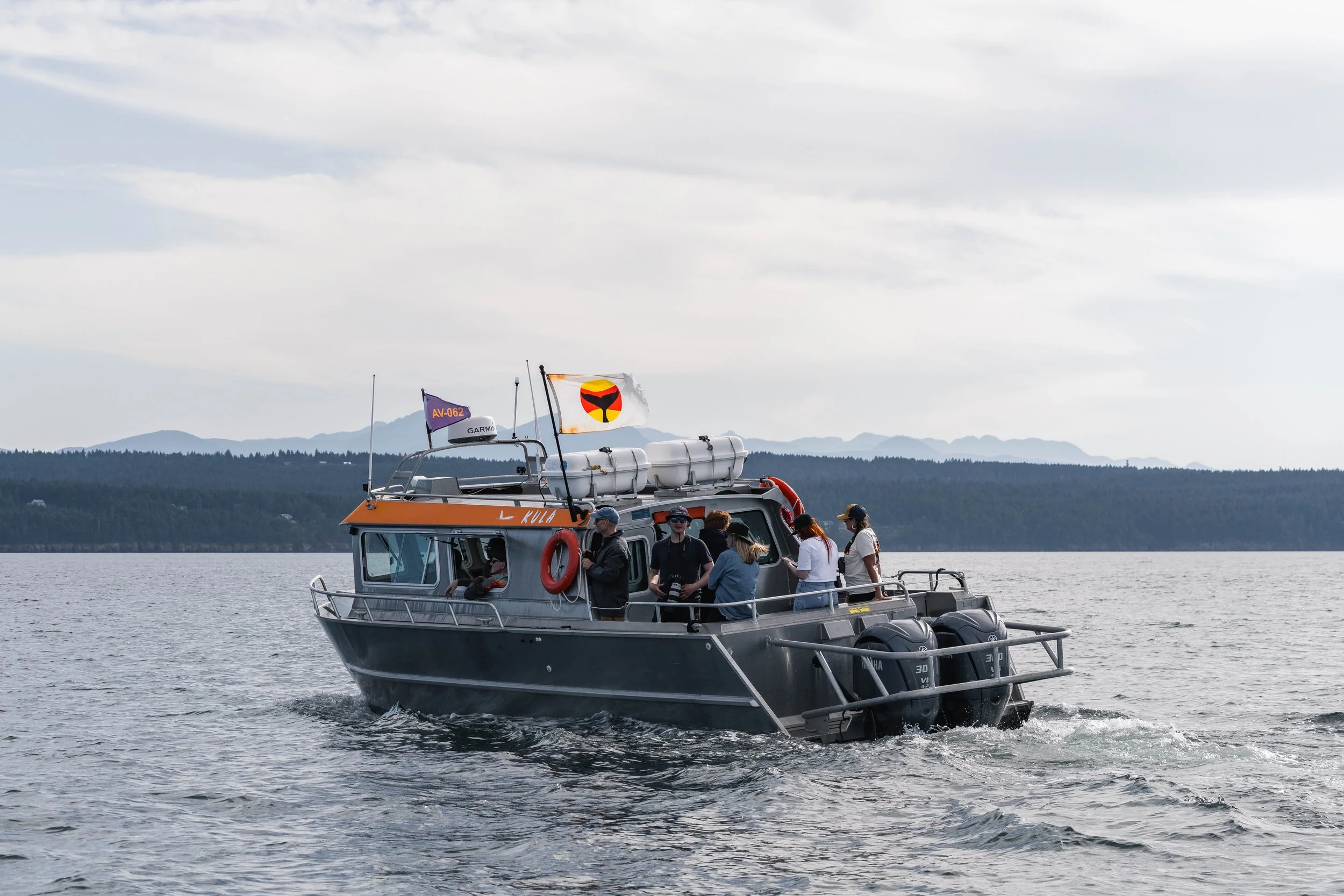July 7, 2025, 3:30 PM - Humpbacks in the Strait of Georgia.
We had two vessels out this afternoon, and the plan was to head back into the Strait to see if the whales were still hanging around. We only had to search for about 30 minutes before spotting a tall blow rising near Halibut Bank, it was Graphite (BCX2007). Based on the behaviour and location, our best guess was that Graphite was feeding, as this area is known to be a productive hotspot.
Humpback whales are baleen feeders, meaning they filter vast amounts of seawater through comb-like plates in their mouths to trap small prey like krill and schooling fish. Rather than using teeth, they rely on an enormous gulp-feeding strategy. A humpback’s throat can expand like an accordion, allowing it to take in massive mouthfuls of water and prey, sometimes over 200 bathtubs full in a single lunge! Once their mouth is full, they use their huge tongue to push the water out through the baleen, trapping the food inside before swallowing. Humpbacks must consume thousands of pounds of food each summer to build up the fat reserves needed for their long migration and months of fasting in the winter breeding grounds. After some time with Graphite, it was time for us to migrate too, and we resumed our search.
As we headed back across the Strait, we spotted more blows near Entrance Island, two large bushy blows and a much smaller one among them. Out came the zoom lenses to snap ID photos. We identified Europa (BCX0854) and Niagara (BCY0057), but who was the little one? Europa had a calf in tow 2025 calf of Europa (BCX0854)! This marks the fifth known calf she’s brought to our waters. Typically, humpbacks give birth every two to three years.
Humpback whale calves begin life with an extraordinary journey. After an 11-month gestation, they are born in warm, shallow tropical or subtropical waters, such as those off Hawaii, Mexico, or Central America, where predators are fewer and conditions are safer. At birth, these calves are already huge, measuring 10 to 15 feet (3 to 4.5 metres) long and weighing up to 2,000 pounds (900 kilograms), about the size of a small car. Despite their size, they are fragile and entirely dependent on their mothers.
The mother-calf bond is immediate and incredibly strong. Calves nurse on thick, nutrient-rich milk, containing about 40–50% fat, which helps them grow rapidly. A calf can gain up to 100 pounds (45 kg) per day. During this early stage, mothers are highly attentive, swimming just beneath or beside their calves, helping them breathe and stay safe. Since mothers don’t feed while in breeding areas, they rely entirely on the fat stores they built up during the summer, using them not only to sustain themselves but also to produce enough milk for their growing calf. It’s a remarkable investment of energy and care, vital to the survival of the next generation.
As we marvelled at one of the newest members of the Strait of Georgia, we spotted yet another blow nearby! We eagerly headed in that direction to see who it could be; it was Barracuda (BCY0649)! She was lunge feeding, perhaps building up fat stores to nurse her next calf. Her last known calf was born in 2022, so fingers crossed she may be pregnant again!
We were delighted to witness her lunge feeding, one of the most dramatic and powerful feeding behaviours in the marine world. With her mouth wide open, Barracuda surged through concentrated prey, engulfing thousands of litres of seawater and prey in one swift motion. Her pleated throat expanded to take in the massive gulp, which she then filtered through her baleen plates, expelling the water and keeping the catch inside. It’s always awe-inspiring to witness such raw power and precision up close.
While the whales were undoubtedly the highlight of the tour, we were also treated to sightings of Steller Sea Lions hauled out on the rocks, harbour seals huddled, and bald eagles soaring overhead and perched high in the trees. These bonus wildlife moments added even more excitement to an already unforgettable day on the water.
Enjoy the photos below taken by Jordan Robinson and Val Watson.
Graphite fluking. Photo by Val Watson.
Europa’s dorsal fin. Photo by Val Watson.
Europa fluking with a pectoral fin beside her. Photo by Val Watson.
Europa diving with her calf beside her. Photo by Val Watson.
Niagara’s dorsal. Photo by Val Watson.
Niagara diving. Photo by Val Watson.
Thar she blows, the whale not Mt. Baker the active volcano! Photo by Val Watson.
Europa on the right with her little calf beside her and Niagara on the left. Photo by Val Watson.
Europa’s calf fluking! Photo by Val Watson.
A big, bushy blow! Photo by Val Watson.
Europa surfacing. Photo by Val Watson.
Niagara, can you spot the falls on their fluke? Photo by Val Watson.
Europa with the B.C. Ferry and Mt. Baker. Photo by Jordan Robinson.
Europa with a fluke waterfall. Photo by Jordan Robinson.
Niagara diving. Photo by Jordan Robinson.
Fluke waterfall. Photo by Jordan Robinson.
Barracuda in front of Mt. Baker. Photo by Jordan Robinson.
Barracuda fluking. Photo by Val Watson.
Barracuda with Vancouver on the horizon. Photo by Val Watson.
A lovely fluke from Barracuda. Photo by Jordan Robinson.
Harbour seals huddled on the rocks. Photo by Jordan Robinson.
A large male Steller Sea Lion growling away. Photo by Val Watson.
Stellers all in a row. Photo by Jordan Robinson.
Sea lions playing in the surf. Photo by Jordan Robinson.
A bald eagle in front of Mt. Baker. Photo by Val Watson.
Cooling off! Photo by Jordan Robinson.
A majestic bald eagle. Photo by Val Watson.
Watchig whales on Kula. Photo by Val Watson.
Watching whales on Keta. Photo by Jordan Robinson.

